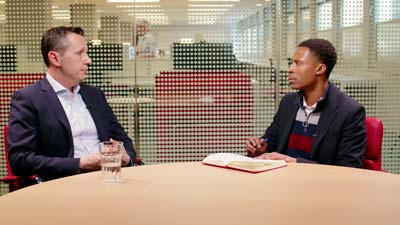This article is part of Morningstar's "Perspectives" series, written by third-party contributors. Here, Ian Spreadbury of Fidelity Strategic Bond Fund, argues that now is a good time for bond investors to reassess the balance of risk in their portfolios.
It is a good time for bond investors to reassess the balance of risk in their portfolios. Across capital markets an excess of savings confront a world of slow growth, low inflation and easy monetary policy. Bond yields are falling as liquidity drives valuations higher. Investors' search for yield has focused on extending credit risk, while reducing interest rate risk. But this trend may have run its course; there is a danger of overreaching for returns at the wrong point in the credit cycle. I expect portfolios will need a careful balance of duration and credit risk to achieve decent risk adjusted returns going forward.

It will be difficult to raise rates without damaging the economy

Systemic Risk Remains High
Debt levels in developed economies have not really come down, despite better economic growth. An intense propensity to save in order to reduce the debt burden is impeding a recovery in demand and the resulting spare capacity is keeping inflation low.
A savings impulse also permeates from China. The central government has made little progress towards adjusting the economy away from export-driven growth and towards consumption. A lack of state welfare in areas such as pensions and healthcare also encourages the population to save.
This fundamental saving-investment imbalance is keeping ‘risk-free’ government bond yields close to record lows, even as stronger economic data in the US and UK raise expectations for higher official interest rates.
In fact, a relatively aggressive tightening cycle has already been factored into the US and UK bond markets. The forward curve implies two year gilts, which move closely in line with the Bank Rate, will be 2.8% in two years’ time. This time last year the figure was 1.3%.
My expectations are for a much slower pace of tightening. I think the market may be underestimating how difficult it will be for the Fed and Bank of England to raise rates without damaging the economy – a consequence of the debt overhang.
Systemic risk (the risk of collapse of an entire financial system or entire market) remains high across the global economy in this environment. There have already been flash points in the banking sector, peripheral Euro zone economies and emerging markets, but it is impossible to pinpoint a trigger for the next crisis. Often it is something off the radar. However, I fear the consequences could be nasty since most governments and central banks now have limited capacity to bail-out their economies again.
This Time Is Different, But No Less Risky
A prolonged period of low rates will continue fuelling investors search for yield. Up to now many investors have focused on adding credit risk at the expense of duration. But I believe there is a limit to how far down the credit curve investors are willing to go as valuations grind higher.
There is a strong consensus to overweight areas like high yield, subordinated financials, peripheral Euro zone debt and hybrids, while reducing duration. Spreads to government bonds in these credit markets have compressed substantially and are now not far from their tightest ever levels, mostly set back in 2006/07 just before the financial crisis.
At that time investors began leveraging their investment to squeeze out additional returns. Like today, low duration, high credit risk strategies were also common place at that time. It is difficult to see that trend returning to the same extent, but the savings glut and low interest rates could have an identical effect – pushing credit spreads beyond their tightest levels, while sowing seeds for a future crisis.
This makes the market environment difficult for investors. Risks become more asymmetric, but reducing long credit positions too early can severely curtail returns. Thankfully, I sense investors are becoming more cautious and are beginning to enhance yield through extending duration to balance credit risk.
Morningstar Disclaimer
The views contained herein are those of the author(s) and not necessarily those of Morningstar. If you are interested in Morningstar featuring your content on our website, please email submissions to UKEditorial@morningstar.com.



























